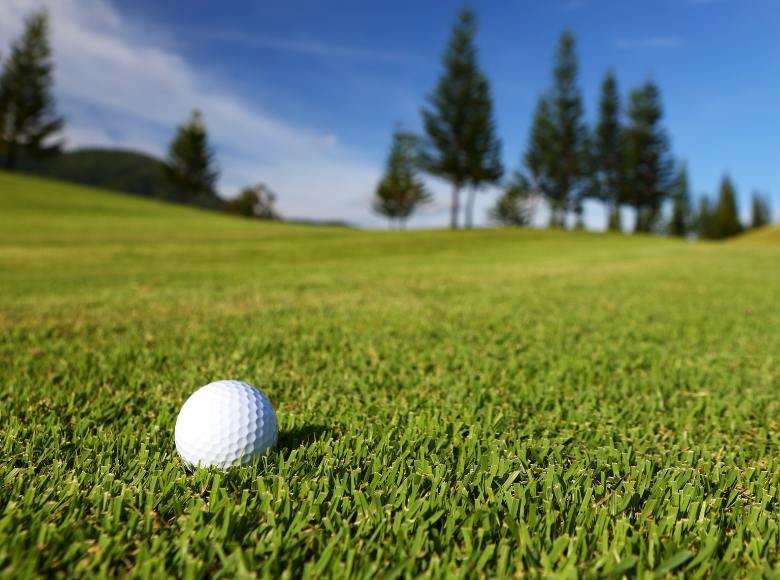Enhance your golf game by understanding the nuances of various course grasses – from the precision required on Bermuda grass to the finesse needed on Bentgrass greens. Adapt your strategy to Zoysia’s forgiving nature and navigate the challenges posed by Poa Annua. Whether facing overseeded Ryegrass or contending with Kentucky Bluegrass density, strategic adjustments are key to optimizing your golf performance.
Golf courses, adorned with diverse landscapes, present players with the challenge of adapting their game to different types of grasses. Understanding the nuances of each grass variety is crucial for optimizing your golf performance.
In this comprehensive guide, we explore six common types of golf course grass and provide insights on how to adjust your game accordingly.
1. Bermuda Grass
Bermuda grass, known for its resilience and ability to thrive in warm climates, is a popular choice for golf courses in sunny regions. Its fine texture and dense growth make it ideal for fairways and tees.
Bermuda grass demands a strategic approach. Shots played close to the green require precision due to the grass’s tight and often grainy texture. Opt for low-lofted clubs for better control, and ensure a clean strike to navigate through the dense surface.
2. Bentgrass
Bentgrass, characterized by its fine blades and ability to withstand close mowing, is a cool-season grass often found in golf course greens. It offers a smooth and consistent playing surface.

When playing on bentgrass greens, prioritize accuracy and finesse. These surfaces are receptive to delicate putts, so focus on reading the green meticulously. Consider a putting stroke that emphasizes a smooth and controlled movement.
3. Zoysia Grass
Zoysia grass is renowned for its adaptability to various climates, making it a popular choice for golf courses. Its dense and hardy nature provides a lush playing surface.
Zoysiagrass demands a well-thought-out strategy. Shots played from fairways covered in Zoysia may offer a slight cushion, allowing for a more aggressive approach. Adjust your stance and swing to capitalize on the grass’s forgiving characteristics.
4. Poa Annua (Annual Bluegrass)
Poa Annua is a cool-season grass commonly found in golf course roughs and sometimes in greens. It thrives in temperate climates, presenting challenges for golfers.
When dealing with Poa Annua, be prepared for unpredictable ball behavior. This grass can create an uneven putting surface, requiring adaptability in your approach. Focus on maintaining a consistent putting stroke to navigate the potential irregularities.
5. Ryegrass
Ryegrass, known for its rapid germination and establishment, is often overseeded on warm-season grasses to maintain a green appearance during cooler months.
When playing on courses with overseeded ryegrass, be aware of the potential increase in ball spin. Adjust your shot selection accordingly, opting for shots with controlled spin to ensure accuracy and distance control.
6. Kentucky Bluegrass
Kentucky Bluegrass, valued for its lush appearance and fine texture, is commonly found in cooler climates and is used for fairways and roughs.
On Kentucky Bluegrass surfaces, focus on precision and shot placement. The dense nature of this grass can influence how the ball sits, impacting your ability to make clean contact. Prioritize accuracy to navigate through the thicker grass.
Adapting your game to different types of golf course grass is a key element of successful play. Understanding the characteristics of each grass variety empowers golfers to make informed decisions, enhancing their overall performance on the course. Whether you’re dealing with the tight texture of Bermuda grass or the unpredictable nature of Poa Annua, strategic adjustments will elevate your golf experience. Stay versatile, observe the nuances of each course, and watch your game flourish on any turf.
For expert golf course maintenance services tailored to diverse grass types, trust DTE Golf® to enhance your playing experience. Contact us to enhance your game on any turf.
